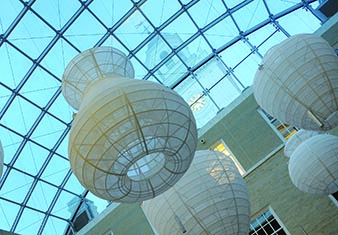
Greener Investments
Fulfilling our promises on sustainability
As part of its efforts to move the university toward a more sustainable future, Johns Hopkins has divested from thermal coal, affirming our role as a leader in environmental sustainability, both locally and globally.
The board of trustees took this significant step in December 2017 at the midpoint of the university’s extraordinarily ambitious Climate Change Implementation Plan, adopted in 2010, to reduce the university’s greenhouse emissions by 51 percent by 2025. In addition to divestment, we have made operational upgrades including the cogeneration systems on the Homewood and East Baltimore campuses; central plant and mechanical systems upgrades to improve efficiency; a commitment to strive for LEED silver certification, or better, in all new buildings and major renovation projects; investments in lighting efficiency across the institution; and improvements in fuel efficiency within our fleet of vehicles.
Academically, we’ve made numerous investments in educational offerings in environmental science and energy policy, including programs and concentrations at the schools of Arts and Sciences, Engineering, and Public Health, and at SAIS. In addition, our faculty are engaged in significant federally funded research into climate impacts—from urban heat islands in Baltimore to the effects of ozone depletion—and renewable energy sources, such as innovative fuel cells and renewable energy markets.
There is still much more to do if we are to reach our climate change goals by 2025, and we are continuously evaluating new approaches that can bring us closer to the future we seek.
Photo: The Undergraduate Teaching Laboratories, a state-of-the-art lab space on the Homewood campus, has received the highest certification available—platinum—from the Leadership in Energy and Environmental Design program.

